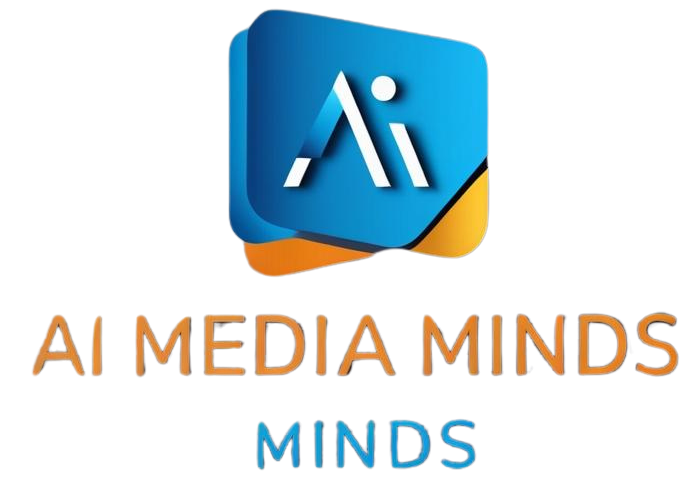AI is becoming more common in business tools, and I’ve found it can really help small businesses save time, simplify tasks, and stay competitive. The range of AI options can be overwhelming, so I’ve pulled together the 12 best AI tools for small businesses to consider using in 2025. I’ll cover what makes these tools stand out and how they fit into real business situations I’ve seen.

Table of Contents
- Why AI Matters for Small Businesses
- How AI is Changing Small Business Operations in 2025
- Criteria for Choosing the Right AI Tools
- AI Tools for Marketing and Content Creation
- AI Tools for Social Media Management
- AI Tools for Customer Support and Chatbots
- AI Tools for Sales and CRM Automation
- AI Tools for Accounting and Finance
- AI Tools for Email Marketing
- AI Tools for Project and Task Management
- AI Tools for Graphic Design and Branding
- AI Tools for Video Creation and Editing
- AI Tools for Data Analytics and Insights
- AI Tools for Website Optimization and SEO
- AI Tools for Productivity and Virtual Assistance
- Tips for Integrating AI Tools Into Your Daily Workflow
- Future AI Trends Small Businesses Should Watch in 2025
- Try One New AI Tool This Week
Why AI Matters for Small Businesses
AI can take some of the hassle out of running a business. I’ve noticed it lowers costs by automating repetitive work and helps catch important details that might get missed. AI also personalizes customer interactions, which can help build loyalty. Even if tech feels unfamiliar, these tools are simple to use and often pay for themselves quickly.
How AI is Changing Small Business Operations in 2025
AI is making routine jobs faster and more accurate. Many small businesses I talk with use AI to answer customer questions, crunch numbers, and even manage social media posts. Tasks that once took hours can now be finished in minutes, like analyzing sales trends or generating content ideas. You don’t need to be an expert to start seeing the benefits. AI is also getting easier to set up and customize, and more small business owners are realizing it’s not just for big companies. New tools are designed to be affordable and flexible, so you can get started without a steep learning curve. With AI handling some of the time-consuming chores, business owners are able to focus more on growth and strategy.
Criteria for Choosing the Right AI Tools
I look for tools that are easy to set up, have clear instructions, and offer good customer support. Price needs to fit your budget and the features should make a real difference for your business. Reading reviews and testing free versions helps me feel more confident before committing. Security and privacy are also really important. I also ask whether the tool integrates well with other services you already use. Think about whether it will save you time every day and make your workflow smoother. Checking user communities can reveal what real people like or dislike about each platform, helping you spot any deal breakers early on.
AI Tools for Marketing and Content Creation
AI content writers like Jasper and Copyai turn a few rough ideas into finished blog posts, ads, or product descriptions quickly. I like using them to brainstorm headlines or edit my drafts faster. Canva’s AI-powered design features are also handy for building ads or social graphics, even without design skills. These tools let you test different content styles and formats to find what connects with your audience faster than before.
AI Tools for Social Media Management
Posting consistently can be tough. Tools like Buffer and Lately use AI to suggest content and pick the best times to post. They analyze what’s working, so I don’t have to guess about which type of posts get attention. AI helps build a steady online presence without spending hours each week. Some platforms even provide suggestions for responding to comments or messages, further lightening your workload.
AI Tools for Customer Support and Chatbots
Chatbots like Intercom and Drift answer simple questions instantly on your website, freeing you and your team to handle more complex requests. Customers get faster help, any time of day. AI chatbots can be trained to match your brand’s voice, which is something I’ve found helpful when I want to keep things professional and friendly. They save valuable time and improve customer response rates, which can lead to higher satisfaction and more repeat business. Plus, with AI, you can offer support beyond traditional work hours, helping your small business compete with larger companies.
AI Tools for Sales and CRM Automation
For tracking leads and boosting sales, HubSpot and Salesforce use AI to remind me of follow-ups and suggest which leads are most likely to buy soon. These CRMs automate a lot of manual data entry and help prevent deals from slipping through the cracks. Even small teams can manage larger customer lists with these smart systems. I also appreciate how AI helps me prioritize the best opportunities, making sales management less overwhelming.
AI Tools for Accounting and Finance
Bookkeeping can take up a lot of time, which is why business owners rely on tools like QuickBooks with built-in AI features. These can categorize expenses, send invoice reminders, and even spot trends in spending. Expensify is another useful option for scanning receipts and tracking reimbursements automatically, cutting down on paperwork and errors. If you’re looking to understand your finances at a glance and make smarter choices, these AI-powered solutions are a must.
AI Tools for Email Marketing
AI-powered platforms like Mailchimp and Brevo analyze which subject lines work best and when to send emails for higher open rates. They personalize messages based on customer interests, making campaigns more effective. I’ve noticed improved engagement and fewer unsubscribes when I use these smart features. Automated A/B testing and content suggestions mean you can fine-tune campaigns in real time, getting better results with less manual effort.
AI Tools for Project and Task Management
Staying organized is easier with ClickUp or Asana’s AI tools, which recommend project timelines and help assign tasks. They notice when deadlines slip or workloads get uneven, letting me adjust before bigger problems happen. Automation features nudge teams to stay on track and cut down on unnecessary meetings. These tools can also help track progress with automated reminders, so tasks don’t fall through the cracks.
AI Tools for Graphic Design and Branding
Designing a logo or flyer used to feel out of reach for me, but AI tools like Looka or Canva’s logo generator give quick, onbrand options. They learn your preferred style and reuse colors, fonts, and imagery, keeping everything consistent. For businesses without a designer, these tools save both time and money. Even if you want to refresh your entire brand, these platforms provide templates and eye-catching designs in minutes.
AI Tools for Video Creation and Editing
Lumen5 and InVideo turn written content into shareable videos in a few clicks. I like these tools when I need explainer videos, social media clips, or simple ads but lack editing expertise. AI handles cropping, transitions, and finding music, so the process feels smooth. Video content is becoming more important for marketing, and these tools can help small businesses keep up without extra staff or training.
AI Tools for Data Analytics and Insights
Google Analytics with AI insights and Zoho Analytics spot business trends and suggest what to focus on next. These tools quickly show what’s working and where things can improve, so I don’t get lost in complicated spreadsheets. They help me see the bigger picture and make better decisions with less effort. With AI, you also get automated alerts for unusual activity, making it easier to respond in real time.
AI Tools for Website Optimization and SEO
Plugins like Surfer SEO and Semrush use AI to help websites show up higher in search results. These tools recommend keywords, analyze competition, and even score onpage content for improvements. I’ve found that regular use can steadily boost site traffic and attract more leads over time. They also often provide easy-to-follow improvement suggestions, so you don’t need to be a tech expert to see results.
AI Tools for Productivity and Virtual Assistance
Everyday workflows move faster with help from AI assistants like Microsoft Copilot or Google Gemini. They can summarize emails, schedule appointments, and even draft replies. I use them to manage my calendar and tasks, which frees up time to focus on core business goals. With virtual assistance, business owners can get through daily tasks more efficiently and keep everything running smoothly.
Tips for Integrating AI Tools Into Your Daily Workflow
Start with one or two key tools instead of trying to use everything at once. Get your team involved early so everyone feels comfortable. Set aside time to train and test AI features, and check results often so you can adjust. Reading support documents and using forums helps solve issues quickly if you get stuck. Look for tools with good onboarding or guided tutorials, and don’t be afraid to ask for help as most providers have responsive support teams or help centers just a click away. Tracking your progress helps you see the impact and decide whether to expand your AI toolkit further.
Future AI Trends Small Businesses Should Watch in 2025
Voice AI is growing, so tools that listen and act on spoken commands are becoming more common. Generative AI is also improving, helping with creative updates across marketing and branding. Automation is expanding into customer service, delivery tracking, and even hiring. Data privacy rules are also getting stricter, so reviewing the privacy policies of each tool is really important before you jump in. Small businesses that stay up to date with these trends will have an advantage in adapting quickly and staying ahead of the competition.
Try One New AI Tool This Week
Picking the right AI tools can open up new possibilities for any small business. Testing a new tool can make everyday tasks easier and give your business a real edge. I suggest exploring the tools in one area you want to improve, like marketing or productivity, and tracking the benefits for a month. Making AI work for you doesn’t have to be complicated, it just starts with a single step. With steady progress, you will notice how much more productive and streamlined your operations become, leaving you more time to focus on growth and innovation.
This guide is designed to help you pick and use AI tools sensibly and effectively. As always, I recommend doing your own research or consulting product documentation before making a final choice.
About the Author
I’ve spent years trying out and reviewing AI tools. I’m always focused on practical tips for real people. From running workshops to helping teams automate their writing workflows, I know what it’s like to feel overwhelmed in the world of AI. My mission is to share advice that works in the real world, so you get more out of the tools you use every day.
There are no affiliate links in this post, but you’re always welcome to check my affiliate disclosure to learn more about how I work.
